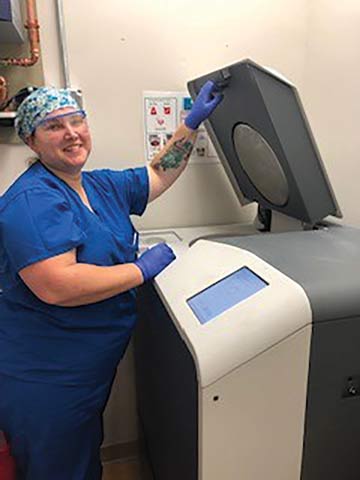The surgical nurse had a substance use disorder, went to rehab for treatment and was in long-term recovery. All seemed well, but she was surrounded by temptation when she returned to work in the OR.
“Seeing wide-open medication waste containers with syringes that still had fentanyl in them was too much for her to resist,” says Kimberly New, JD, BSN, RN, founder of Diversion Specialists, a medication security consulting firm in Nashville, Tenn.
The nurse relapsed and ultimately lost her nursing license. Her method of diversion was simple: She went into trash cans and open sharps containers to retrieve discarded syringes that contained a few precious drops of fentanyl.
“People [with drug abuse problems] will go to any lengths to divert,” says Ms. New. “With the kinds of drugs, the quantities of the substances and the pace of the work in a surgical setting, you need to have a disposal device that reduces the risk of diversion close to where staff are working, so they can immediately discard controlled substances.”
Drug disposal devices that prevent diversion are much more common than they were even a couple of years ago. Some of the devices are plugged into a power source, and some need water added to them, but most operate the same way: Armed with a one-way funnel, the devices contain a carbon-based mix that absorbs contents deposited from syringes, vials and IV bags, deactivating the substances and making them non-retrievable for use. Even though the devices render substances unusable, some manufacturers add ipecac syrup to induce vomiting in the event someone breaks into the device and drinks the discarded medications.
In addition to injectable liquids, tablets, capsules and patches can be disposed in the receptacles. Ms. New says the devices can be bracketed to every anesthesia cart in your facility, so staff can conveniently squirt the medications into the devices.
Drug disposal devices are fast becoming the best practice and the gold standard for getting rid of controlled substances, and should be used in every facility, according to Ms. New. If those traces of fentanyl that led to the nurse’s downfall had been handled differently, she might still be working in the career she loved. “Staff could have squirted the leftover amount into a disposal receptacle,” says Ms. New. “The nurse would have found only empty syringes, making her ability to divert much less likely.”
It’s also important to ensure that patients properly dispose of the controlled substances they’re prescribed after surgery. Ms. New recommends that you supply patients with drug deactivation disposal pouches at discharge. The pouches, which employ carbon to render controlled substances inert, can simply be thrown into household trash.
.svg?sfvrsn=be606e78_3)

.svg?sfvrsn=56b2f850_5)